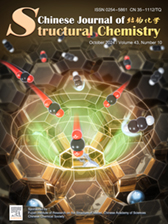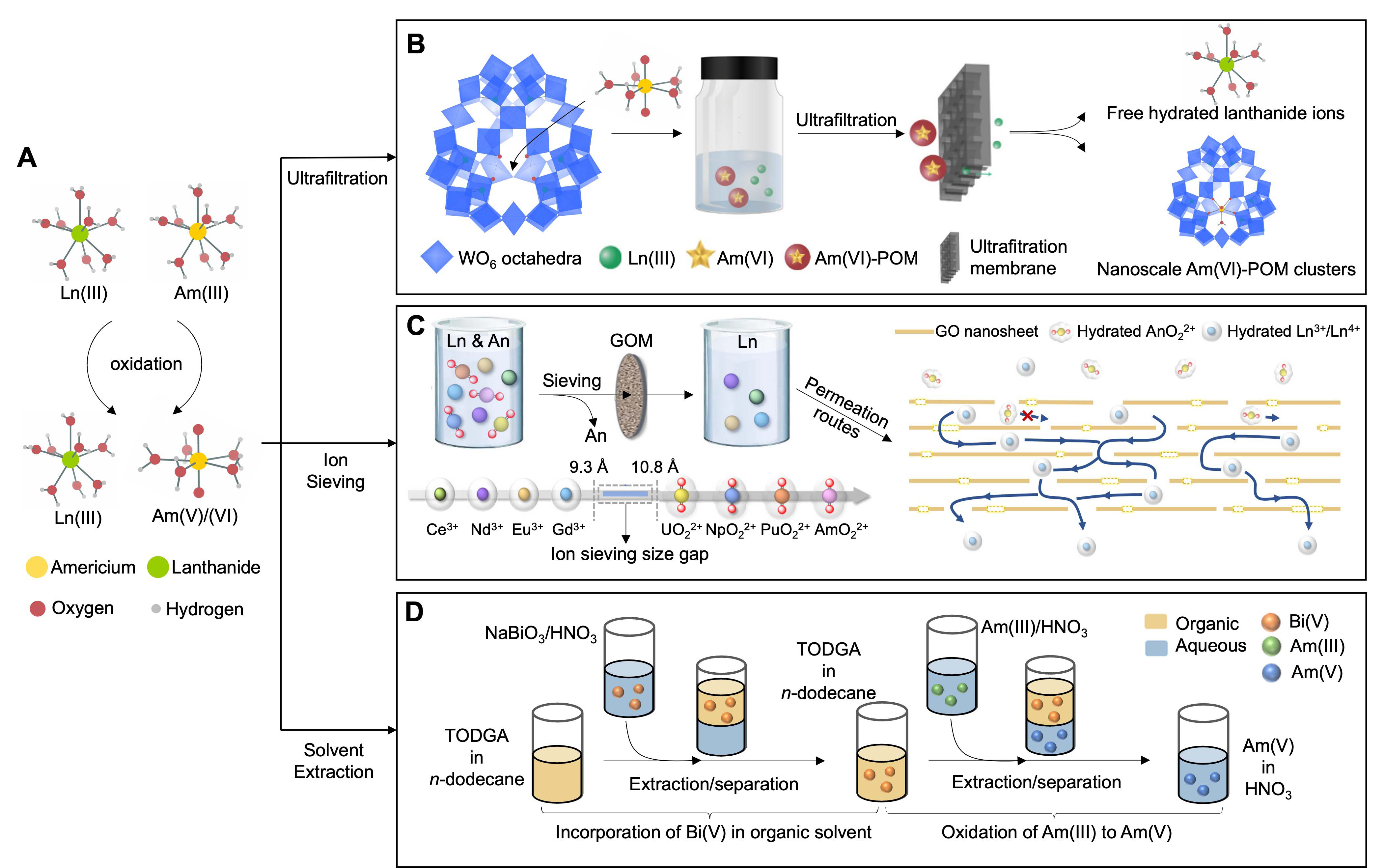
Electrostatically driven kinetic Inverse CO2/C2H2 separation in LTA-type zeolites
Yongheng Ren, Yang Chen, Hongwei Chen, Lu Zhang, Jiangfeng Yang, Qi Shi, Lin-Bing Sun, Jinping Li, Libo Li*
Submit a Manuscript
Huangjie Lu, Yingzhe Du, Peng Lin*, Jian Lin*
Chin. J. Struct. Chem., 2024, 43: 100344. DOI: 10.1016/j.cjsc.2024.100344
October 15, 2024
ABSTRACT
In summary, the increasing
interest in separating lanthanides and actinides for the purposes of spent
nuclear fuel reprocessing has spurred renewed research efforts in this domain
recently. Although the higher oxidation states of Am have been recognized for
several decades, the development of separation techniques based on the control
of Am oxidation state remains less advanced. The key challenge in spent fuel
reprocessing lies in achieving complete oxidation and long-term stabilization
of high-valence Am under practical conditions. This necessitates addressing the
complexities of real-world spent fuel reprocessing scenarios (high acidity and
radiation level) and minimizing the generation of secondary waste. In this
perspective, we outline the most recent advances in lanthanide and actinide
separation following redox-based protocols. High Am/Ln separation factors have
been achieved in these works via judicious synergy between proper selection of
chemical oxidants and stabilization of Am(V)/Am(VI) via complexation or ion
sieving. Ongoing efforts to develop oxidation strategies and separation
technologies hold the potential to yield an advanced process suitable for
application within the nuclear industry. In addition, separation strategies
based on oxidation state control holds promise for addressing the even more
challenging task of Am/Cm separation in advanced nuclear fuel cycle.






